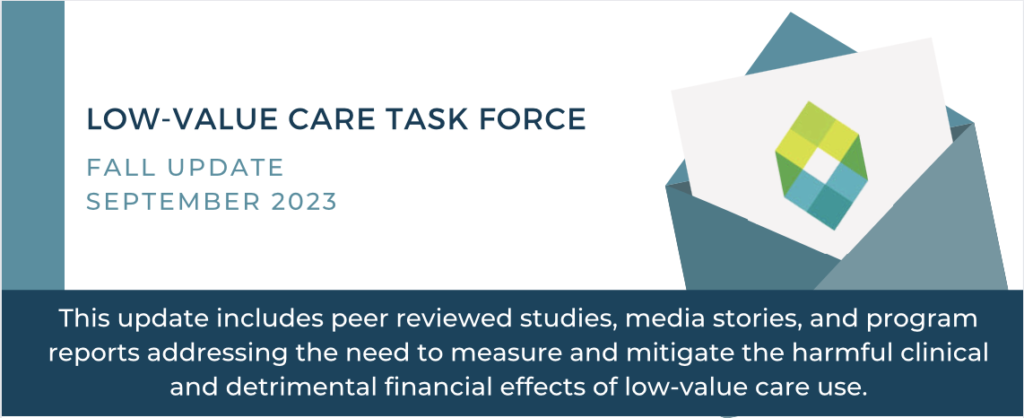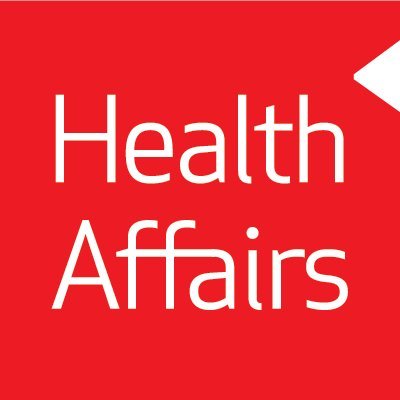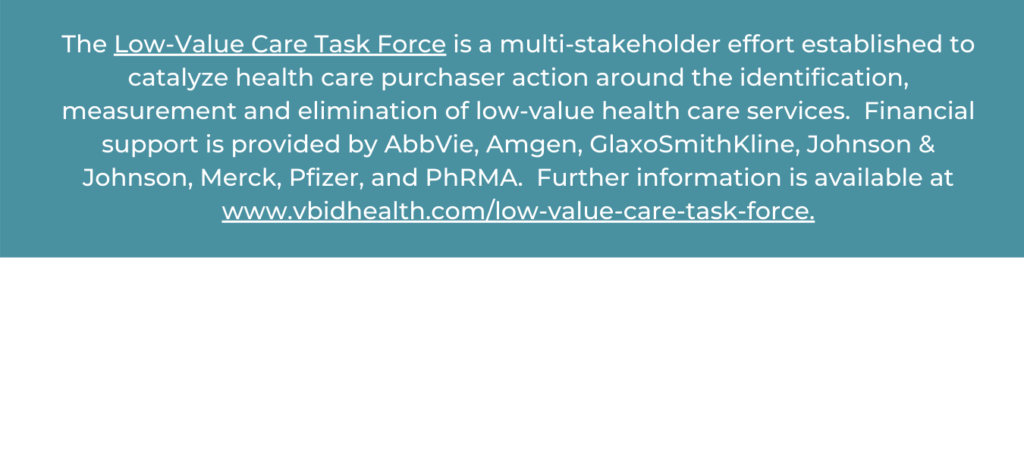
- De-Implementation of Low-Value Care for Women 70+ with Low-Risk Breast Cancer
- LVC Received by Medicare Beneficiaries & Associated Spending in U.S. Health System
- Effectiveness of De-Implementation Strategies for Low-Value Prescribing in Secondary Care
- How The Health Care Industry Wastes Nearly A Trillion Dollars A Year
- Medicare Imaging AUC Program: Sometimes Less Is More
- Primary Care Docs Affiliated with Health Systems Drove Up Spending: Study
- Enhanced Access but Increased Testing with Virtual Care
- U.S. Employers to See Biggest Healthcare Cost Jump in a Decade in 2024

Most efforts to de-escalate breast cancer treatment have focused on women 70 years of age or older, who account for approximately one third of all patients with newly diagnosed disease. A recent study provides evidence of appropriate and sustained de-escalation of adjuvant radiotherapy for women 70+ with low-risk breast cancer during the COVID-19 pandemic, without a change in rates of radiotherapy receipt among patients with high-risk breast cancer.

In a cross-sectional analysis of Medicare beneficiaries linked to healthcare systems in the United States, researchers evaluated utilization and expenditure associated with 40 low-value healthcare services provided within these systems. The results revealed that PCPs were responsible for the majority of prescribed lab tests and medications among the services examined, while specialists took the lead in ordering or making referrals for imaging and procedures. Notably, specialists were found to contribute a higher proportion of overall spending compared to their utilization rates for 28 of the 40 examined low-value services, reinforcing existing evidence that specialists account for a significant portion of low-value healthcare spending.

A recent systematic review of 11 studies was conducted to better understand the effectiveness, barriers, facilitators and consequences of de-implementation strategies targeting inappropriate medication prescribing in secondary care settings. Results indicate that clinical decision support systems proved to be the most common and effective, and educational strategies may also be effective. However, researchers emphasize the importance of considering environmental, contextual, social and knowledge-driven barriers and facilitators when replicating or optimizing de-implementation strategies.

A recent Catalyst blog post suggests that the U.S. could save nearly $2B per year by addressing the three biggest culprits of health care cost waste: administrative burden, pricing failure, and clinical waste. “With health care costs expected to balloon 8.5% in 2024, now is the time to embrace systems change through a mix of payer and provider action, value-based payment adoption, and policy.”

In 2014, Congress passed legislation instructing CMS to implement the Medicare imaging Appropriate Use Criteria (AUC) program, hoping to improve the appropriateness of advanced imaging services and decrease over-utilization. This legislation was overly prescriptive, however, leading to nine years of wasted investment and unproductive disruption to workflow. In July 2023, CMS proposed to pause the AUC program, as it has remained impractical and a potential barrier to access for Medicare patients, and may interfere with the efforts of newer, better-quality initiatives and value-based care programs.

Primary care physicians affiliated with large health systems drive up spending on patient care through increased referrals to specialists, emergency department visits and hospitalizations, per a study led by the Harvard T.H. Chan School of Public Health. In analyzing utilization patterns from several state provider databases for more than 4M patients in Massachusetts, authors find that vertical relationships in 2015 and 2017 were associated with a $357 increase in total medical expenditures per patient/year, a 6.26% increase versus the comparison group mean. Read more.

According to a new BMJ study, virtual care substantially benefits timeliness of clinical care and allows for effective assessment of mental and behavioral health for primary care physicians in 10 countries. A large minority of primary care providers, however, believe virtual care leads to more imaging and laboratory test ordering, as well as more antibiotic prescribing. On average, one-quarter of physicians reported that virtual care increased their imaging and laboratory test ordering (mean: 25%; range: 10%–52%). These increases in testing and antibiotics are likely to include unnecessary care, potentially raising costs and exposing patients to harm with limited clinical benefit.

According to benefit consultants at Mercer, Son, and Willis Towers Watson, employers should anticipate healthcare expenditures to surge from 5.4% to 8.5% in 2024. This increase is attributed to factors like rising medical inflation, increased demand for expensive weight-loss medications, and the broader accessibility of high-priced gene therapies. A recent survey by Mercer revealed that more than two-thirds of employers either have no intention of transferring the entire cost increase to their employees or plan to pass on a portion of the anticipated rise in expenses for 2024. Read more.

